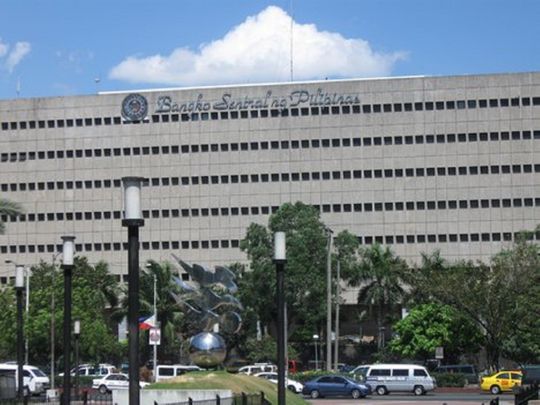
Manila: The Philippines cut its benchmark interest rate by a quarter-percentage point Thursday, in line with most forecasts, resuming policy easing after economic growth and inflation slowed.
Bangko Sentral ng Pilipinas reduced the overnight borrowing rate to 4.25 per cent, it said in a statement. Twenty-three of the 26 economists surveyed by Bloomberg predicted the decision.
“Weaker global economic prospects continue to temper the inflation outlook,” central bank Governor Benjamin Diokno told reporters after the decision. That environment “provides room for a further reduction in the policy rate as a pre-emptive move against the risks associated with the weakening global growth.”
The central bank cut its inflation forecast for the year to 2.6 per cent from 2.7 per cent at its June meeting. It lowered next year’s inflation forecast to 2.9 per cent, from 3 per cent earlier.
“We think the worst is likely behind the Philippine economy this year, but stronger external headwinds and downside risks to investment give scope for another 25 bps cut by year-end,” Bloomberg Economics’ Justin Jinemez wrote.
Policymakers across the region are taking stronger steps to counter global economic risks after the Federal Reserve’s rate cut last week gave them room to pursue looser monetary policy. Central banks in India, New Zealand and Thailand cut rates on Wednesday, each taking more aggressive action than economists had predicted.
Diokno said earlier this week he sees about 50 basis points of interest rate cuts for the rest of the year, with the timing likely to depend on economic data.
Data on Thursday showed the Philippine economy grew 5.5 per cent last quarter, the slowest pace in more than four years, and well below the median estimate of 5.9 per cent in a Bloomberg survey of economists.
We think the worst is likely behind the Philippine economy this year, but strong external headwinds and downside risks to investment give scope for another 25 bps cut by year-end.
Diokno said a projected recovery in household spending, as well as accelerated implementation of government infrastructure plans, should keep growth from slowing further.
The central bank cut interest rates by 25 basis points in May and paused in June. Inflation eased to a two-year low of 2.4 per cent in July from 2.7 per cent in June, and economists predict price pressures will remain benign, given lower food prices, easing oil costs and a high statistical base effect.
Rate cuts aren’t the only tool in the central bank’s kit. Noelan Arbis, an economist at HSBC Holdings Plc in Hong Kong, predicted the central bank would lower the reserve requirement ratio for banks by 100 basis points by year-end — freeing up cash for lending — in addition to cutting the benchmark interest rate by another quarter-percentage point.
Deputy Governor Francis Dakila told reporters lowering the ratio is a “live discussion of the board,” although members didn’t address it in today’s policy meeting. Officials said they are waiting to see how liquidity from prior reserve ratio cuts filter through to the rest of the economy.
“It shows that the BSP is not over-reacting to the lower-than-expected GDP print this morning, which was largely driven by weak infrastructure investment as a result of fiscal spending delays,” Arbis said. “We think a 25 basis-point cut still enables the BSP to provide support for the economy.”












